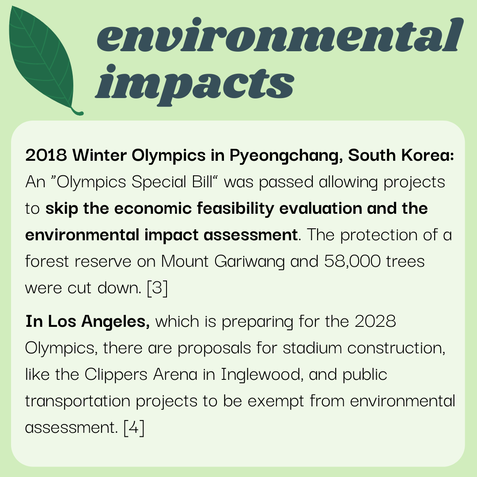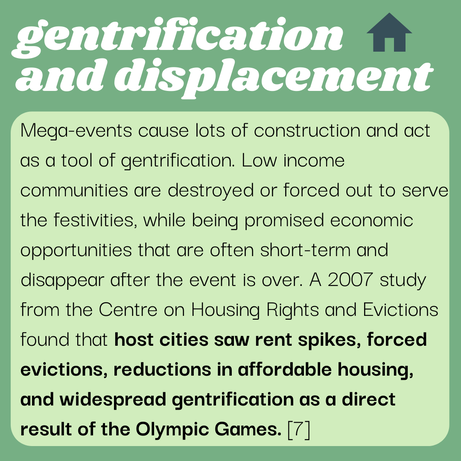The fifth installment of our Ethics in Civil Engineering series discusses the ethical concerns that arise from mega-events like the Olympics.
From the Oxford Dictionary of Sports Studies, mega-events are defined as “large-scale cultural events that have usually at least a national profile and impact, and often an international one, and that are organized on a larger scale than routine fixtures in the sporting calendar. In sport, the Olympic Games are the epitome of the mega-event."
The incentives of hosting mega-events are the anticipated positive economic impact and social status of the local economy due to an increase in tourism. The host city often begins large-scale construction projects for sporting facilities and supporting infrastructure. This includes new roads, improvements to public transit networks, and major urban change that total to billions of dollars.
These projects have a hard deadline for completion, and have been used by politicians to bypass urban development applications, including social and environmental assessments and public hearings.
These projects have a hard deadline for completion, and have been used by politicians to bypass urban development applications, including social and environmental assessments and public hearings.
A key part of Rio’s Olympic bid was their Bus Rapid Transit (BRT) system. BRT is a hybrid transportation network that uses buses like a light rail system. Rio maintained that BRT would decrease congestion, increase public transportation usage and mobility, and ensure the Olympics would run smoothly.
The BRT, however, does not go where most need it to go. It was meant to connect Rio’s North Zone, a working-class area with a long history of governmental neglect, to other parts of the city. The BRT routes go to the Olympic ring of Barra da Tijuca. It promotes bringing in poorer, relatively immobile people to serve the upper-middle class rather than helping them and working-class people access jobs in congested areas like the city center and South Zone. This further isolates the the city’s low-income residents and reinforces existing patterns of urban inequality.
The BRT, however, does not go where most need it to go. It was meant to connect Rio’s North Zone, a working-class area with a long history of governmental neglect, to other parts of the city. The BRT routes go to the Olympic ring of Barra da Tijuca. It promotes bringing in poorer, relatively immobile people to serve the upper-middle class rather than helping them and working-class people access jobs in congested areas like the city center and South Zone. This further isolates the the city’s low-income residents and reinforces existing patterns of urban inequality.
Check out our Instagram post for further reading! Also, to learn more about the topic of mega-events, head over to nolymicsLA.com or watch State of Exception.



